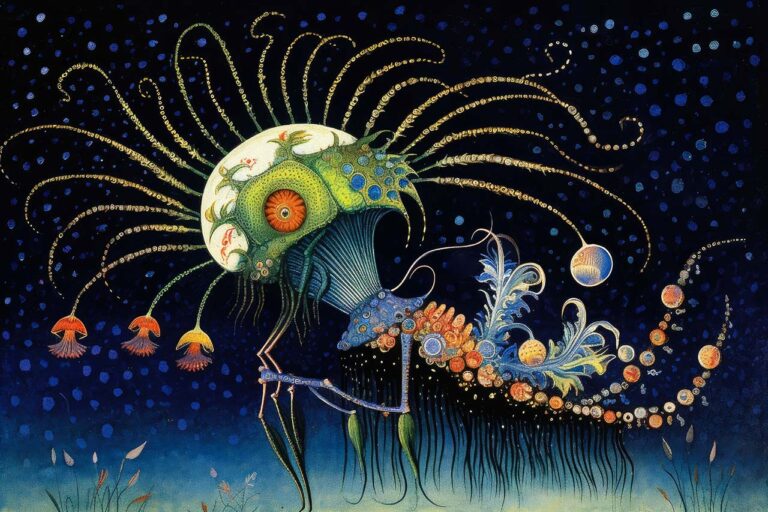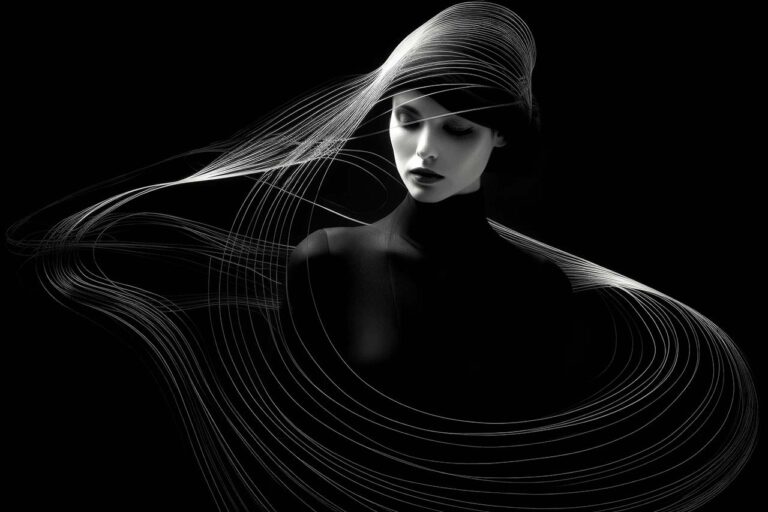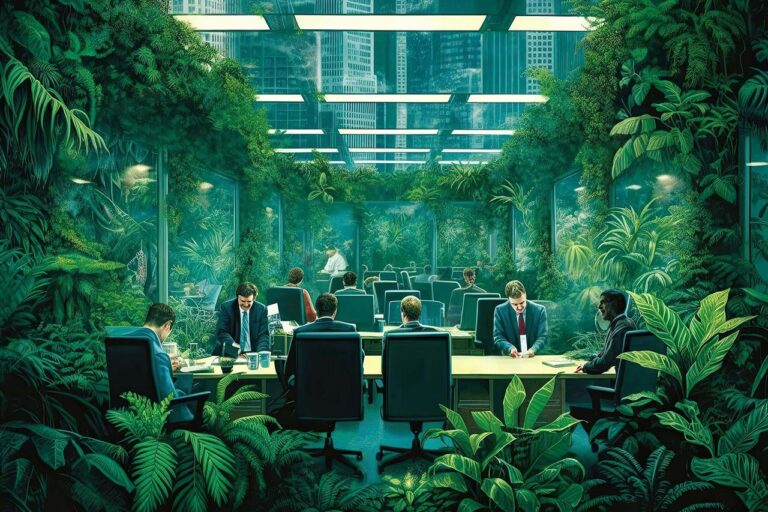
Info
- Digital artwork by Olio Imaginarium
- A series of 100 digital artworks
- Year: 2024
Artwork In brief
A century ago, visionary poet André Breton crafted the ’Manifesto of Surrealism’ (1924), which served as the guiding light for one of the most impactful art movements of the 20th century, influencing movements from Abstract Expressionism to Pop Art. Moreover, its imagery has permeated popular culture, leaving its mark on film, advertising, and design. The ’Surreal 100’ series celebrates a century of Surrealism (1924-2024) by showcasing 100 surrealistic works from Olio Imaginarium, demonstrating how surrealist techniques can be enhanced in the era of generative AI. The first part of the series focuses on surrealist paintings and there’s more to come. Never quit dreaming—embrace the fantastical, the absurd, and the irrational!
Surrealist artists believed in the power of the unconscious and sought to unlock its creative potential through techniques such as automatism, free association, and the use of dream imagery. They were convinced that allowing the subconscious to express itself could unveil deeper truths, leading to the creation of more authentic and original artwork.
Automatism, a fundamental technique in Surrealism, involved the creation of art without conscious thought or intention, allowing the subconscious mind to take control. In automatic drawing, the artist would allow her hand to move freely across the paper without a planned design. This could involve closing the eyes or focusing on something other than the drawing itself, letting the hand move irrationally. In automatic writing, a writer would let thoughts flow without censorship or conscious structuring, open to whatever emerges, be it words, phrases, or disjointed sentences. Surrealists often used these automatic texts and drawings as raw material to be further refined in various ways.
Another widely used technique was collage, where surrealists aimed to create unexpected juxtapositions. By combining unrelated images and objects, they challenged viewers to find meaning in the irrational or absurd combinations. For inspiration, surrealists often turned to their dreams, attempting to capture the symbolic, bizarre and illogical nature of dream imagery in their art. I tend to employ similar tactics in my creative process to “open the gates” and set my mind flowing with ideas.
As of 2024, we are witnessing the rapid emergence of AI-based generative tools that surpass the wildest dreams of the original Surrealist artists. In my experience they work wonders on surrealistic purposes – colliding seemingly unrelated concepts, creating unusual visual juxtapositions and yielding unexpected outcomes. Interestingly, the perceived drawbacks of current AI tools, such as hallucinations and the challenge of detailed control, might paradoxically serve as advantages in surrealistic endeavors. Like the subconscious mind, generative AI frequently presents us with results we didn’t quite expect.
I find AI to be a powerful tool for combining seemingly disconnected visual elements, styles, and techniques. These experimentations often lead to surprising outcomes, which I couldn’t achieve by any other means. I view this imagery as raw “starter” material which I then progressively modify and sculpt in a chosen direction. At this point, rational thinking takes over, and I begin to set goals, refine the ideas, and elaborate on the visual theme. Starting work in this intuitive manner feels effortless to me, opposed to beginning with a preconceived idea and struggling to visualize it. In this process, an element of the unexplained naturally becomes part of the work, an aspect I find crucial.
Personally, Surrealism is one of the art movements I keep going back for inspiration. To me, the essence of artistic practice lies in the realm of the unexplained. What triggers curiosity in artwork is often mystery – something that is out of place, illogical, and demands attention. While science studies reality, art transcends the limits of reason and reality; imagination goes beyond reality. That is what Olio Imaginarium is all about.



